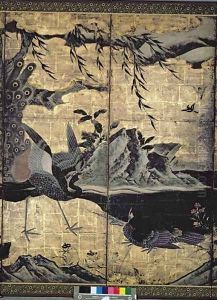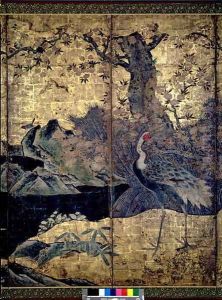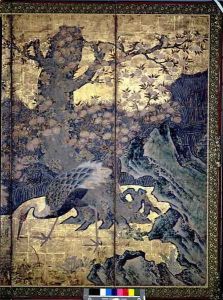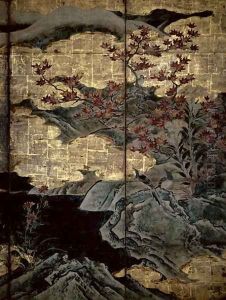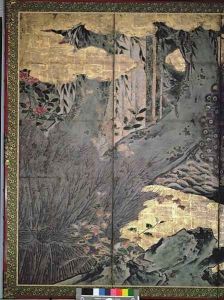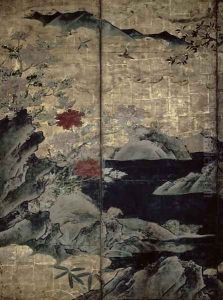Kano Soshu Paintings
Kano Soshu, born in 1551, was a member of the esteemed Kano school of painting in Japan, which played a pivotal role in the development of Japanese painting from the 15th to the 19th centuries. The Kano school was founded by Kano Masanobu and was renowned for its patronage by the shogunate and imperial court, along with various temples and wealthy merchants.
Soshu was a grandson of Kano Motonobu, one of the most prominent figures in the Kano school, and was also known as Kano Eitoku's younger brother. His birth name was Kano Heishiro. He grew up during the Azuchi-Momoyama period, a time marked by military conflict and the consolidation of power under Oda Nobunaga and Toyotomi Hideyoshi, which deeply influenced the art and culture of the era.
Soshu contributed to the Kano school's reputation, which was synonymous with the power and prestige of the ruling class. The Kano painters were best known for their mastery of the yamato-e and Chinese-inspired ink painting styles, as well as for their development of the fusuma-e (sliding door panels) and byobu-e (folding screen paintings) genres. These works often depicted scenes from nature, traditional Japanese narratives, and Chinese literary themes.
Although Soshu's individual works are less documented than those of his brother Eitoku, it is known that he worked on various large-scale projects, often assisting Eitoku. Following the Kano school tradition, Soshu's style would have blended the bold and dynamic brushwork with a keen sense of compositional arrangement, suitable for the grand interiors of the castles and temples that were his canvases.
Soshu's career was cut short by his untimely death in 1601. Despite his early death, his contribution to the Kano school helped to cement its long-standing influence on Japanese painting. The Kano school's traditions continued for over 400 years, and its impact can still be observed in various forms of Japanese art today.
